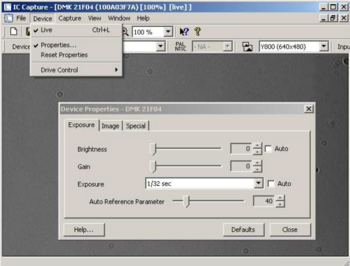Optical Microscopy Part 4: Particle Tracking
Introduction and Background
Need to input a bunch of equations.
Experiment Details
Stability and Setup
The major challenge of particle tracking microrheometery is the small scale of the thermal forces and the associated nanometer scale displacements. A few things you can do to ensure the experiment works: Be sure all the microscope components are rigidly assembled and firmly tightened. Poorly built scopes shake. It is also vital that when you perform this experiment that the optical tables are floating so that building noise is isolated. Of course, avoid touching the optical table and the microscope during the measurement. There are also cardboard boxes available that you can put over your microscope to isolate it from air currents. Finally, make sure that you and the people around you are not talking too loudly during the experiment, because acoustic noise is significant.

System Verification
Live Cell Measurements
References
